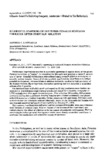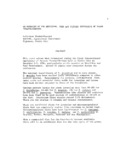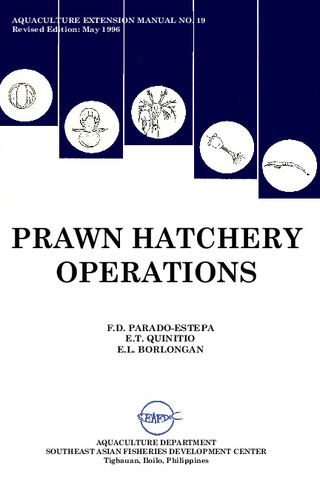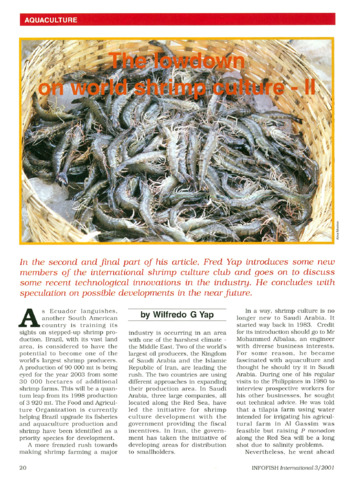Successful spawning of cultured Penaeus monodon Fabricius after eyestalk ablation
Share
Abstract
Preliminary experiments resulted in successful spawning of captive stock of the prawn Penaeus monodon, or “sugpo”, to complete the life cycle and produce a viable F1 generation of larvae. Gonadal development was induced using eyestalk ablation techniques on sexually mature females. Removal of one eyestalk was found to be sufficient to induce gonadal development, whereas bilateral ablation indirectly resulted in high mortality of the treated females. By comparison, successful spawning had not occurred in unablated animals after 9 months.
Fry hatched from wild adult stock and reared to 25-day postlarvae were further impounded in brackishwater experimental ponds and reared for 4 months. A transfer of 1 500 animals were then made to marine pens. After a further 10 months, 600 animals were selected for the experiment; healthy females were ablated unilaterally and placed with 100 males for a further 9 months. Of the remaining 400 specimens, 200 were used as controls and the remainder ablated bilaterally, Seven of the 23-month old females with one eyestalk removed had spawned successfully by January 27, 1976.
Egg numbers, hatching rate and larval survival compared favorably with data obtained from females of oceanic origin. It is not known if the success of the experiment was entirely due to the effect of ablation or to the choice of a suitable environment. Work is continuing to induce gonadal development under more closely controlled conditions to overcome the inadequate and unreliable supply of spawners.
Suggested Citation
Santiago, A. C., Jr. (1977). Successful spawning of cultured Penaeus monodon Fabricius after eyestalk ablation. Aquaculture , 11(3), 185-196. https://doi.org/10.1016/0044-8486(77)90111-9
Taxonomic term
Collections
- AQD Journal Articles [1249]
Related items
Showing items related by title, author, creator and subject.
-
An overview of the nutrition, feed and feeding techniques of prawn penaeid/shrimps
Piedad-Pascual, Felicitas (Philippine Council for Aquatic and Marine Research and Development, 1989)This paper echoes what transpired during the first International Conference of Penaeid Prawns/Shrimps held in Iloilo City in December 4-7, 1984, particularly on the Nutrition nd Feed Development. Around 25 papers were ... -
Prawn hatchery operations
Parado-Estepa, Fe D.; Quinitio, Emilia T.; Borlongan, Emeterio L. (Aquaculture Department, Southeast Asian Fisheries Development Center, 1996-05)The manual, an updated version of the 1984 SEAFDEC/AQD manual, presents the underlying principles and step-by-step instructions of prawn larval and post-larval rearing. The techniques described are not only applicable to ... -
The lowdown on world shrimp culture - II
Yap, Wilfredo G. (INFOFISH, 2001)This paper introduces some new members of the international shrimp culture club and goes on to discuss some recent technological innovations in the industry, particularly the polyculture of tilapia (mainly Oreochromis ...




